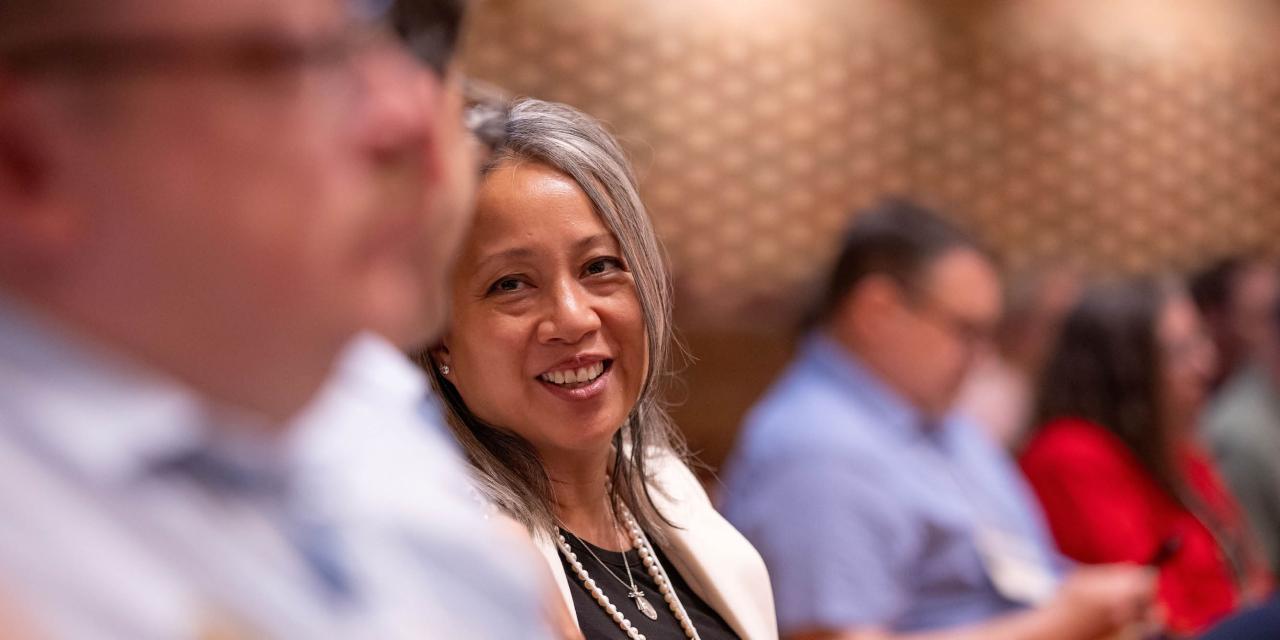“When I was an Evangelical Covenant Church pastor, people off the street would ask for a private baptism. I explained we only do baptism in corporate worship.
“That way we celebrate that there are real promises that the community makes to the child and the family,” says Mark Torgerson. Ordained in the Evangelical Covenant Church, he teaches worship arts at Judson College in Elgin, Illinois, and consults with churches considering a new design or renovation.
We are people on a journey
Regina Kuehn writes in A Place for Baptism, “The baptistry is an abiding reminder of what we once were, what we now are, and what we shall one day yet be.” That’s why Torgerson often uses the term Christian initiation instead of baptism.
“Baptism, simply, is Christian initiation into the Church, but sometimes we don’t think about it. Though some churches do baptism as a private event, most are moving toward doing baptism within corporate Sunday worship,” he adds.
The words of baptism services within the Reformed tradition remind worshipers that baptism is a sign and seal of God’s grace on a journey that is both individual and corporate. The congregation promises to nurture the infant in faith. They pray the child will mature to confirm his or her baptism through profession of faith—and by following Jesus’ command to go and make disciples of all nations, baptizing them in the name of Father, Son, and Holy Spirit.
In baptism, as in the rest of worship, words are not always enough to shape lives.
“In the Protestant world today, we’re getting beyond the cognitive senses. I’m a real fan of making the font or pool visible or accessible to the whole group. Putting it near the entrance visually reminds us of our Christian initiation. Letting people touch the water kinesthetically reminds them of their baptism.
“Some churches use holy oil with a baptism to mark consecration by the Holy Spirit. The oil is really fragrant. It’s a significant value that reminds all of us, ‘Wow! I’ve been initiated,’ ” Torgerson says.
Objects can center a community
Torgerson sees Christian faith as far more than a person’s relationship with God. It’s also seeing ourselves as members of Christ’s body, growing together in faith. In planning worship spaces, he advises congregations to accent the communal nature of the worship gathering.
This advice contrasts with the trend to remove traditional objects of church furnishings, such as communion table, baptism font, or pulpit, from the worship space.
“Those objects can be visible reminders of who we are as members of Christ’s body. They mark significant focal points in the lives of Christian congregations.
“Also, the way we provide for people to sit or move, especially whether we provide room for people to gather around these focal points—will limit or unleash the potential for accenting community in worship,” Torgerson says.
He acknowledges, of course, that deciding to make the baptistry more accessible or use more water in baptism will require space around the pool to gather the congregation and rooms for people to change into robes.
And that can get expensive.
Author Regina Kuehn challenges churches reluctant to invest much time, money, or thought into liturgical symbols, including those used in baptism. “To come down always on the minimalist side in decisions about the liturgy makes a silent statement that says, in effect, ‘We really don’t want to get excited about God and the way divine life links up with ours. We would rather stay cool and detached and play down the signs of salvation instead of fully embracing them.’ ”
Water speaks
In Re-pitching the Tent: Re-Ordering the Church Building for Worship and Mission, Richard Giles writes, “We need to see the water, touch it and hear it. Water should well up in our assemblies, splashing and gurgling, reminding us constantly of Jesus’ promise of a ‘spring of water welling up to eternal life’ (John 4:14). It should not be mean and mealy-mouthed but joyful and extravagant. It is water itself (not its container) which is the primary symbol of baptism, and it should be readily available to every member of the community entering the assembly.”
Torgerson agrees with the plea for more water in church. “Shallow fonts tend to diminish the idea of washing, of a cleansing flood. It’s really hard to get a sense of that when baptism is done with a tiny bit of water.
“Orthodox Christians tend to use quite deep fonts. Babies are usually naked. They’re dipped down into the water and are usually screaming mad when they come out, but they are baptized. It’s a substantial washing that reminds us we need to be completely washed, made new.
“Using so much water is also true to the Pauline metaphor of dying and rising with Christ. When you use this visual metaphor, you don’t even have to say it,” he explains.
Torgerson also says churches should think more about reminding each other of our baptisms. The Apostles’ Creed began as a baptismal creed, a way for the early church to hand on its faith to converts preparing for baptism. Saying the Apostles’ Creed in worship is a natural way to remind people of their lifelong formation within a community of faith.
Torgerson proposes another use for the baptismal font. “Paul said, ‘Don’t come to the Lord’s Supper unless you are fully reconciled to one another.’ But most churches don’t have a place set aside for reconciliation. Could we use the baptismal font for reconciliation?”

